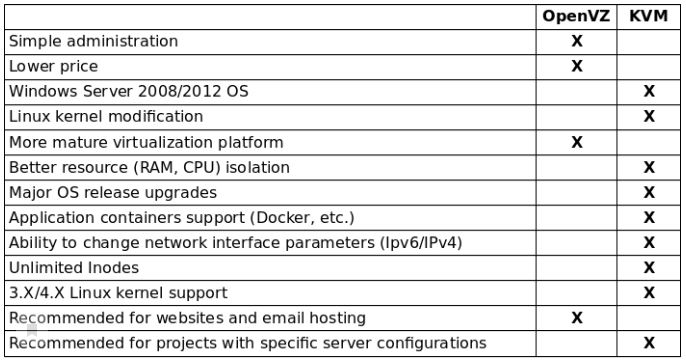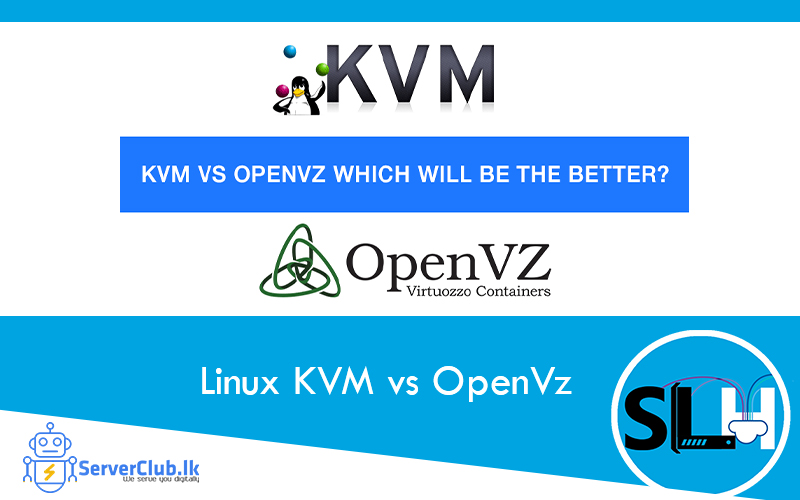There are many options to choose from, like Hyper-V, Xen, VMware, let’s examine and differentiate between two more common types which you can order in SriLanka Hosting as well: KVM and OpenVZ.
OpenVZ
OpenVZ is container-based virtualization for Linux. OS level virtualization means many basic components exist once on the machine and are used by all guests (like the identical kernel). Each container performs and executes exactly like a stand-alone server; a container can be rebooted independently and have root access, users, IP addresses, memory, processes, files, applications, system libraries and configuration files. This way you use the resources more efficiently.
Some pros of running OpenVZ is good performance and fewer resources needed for the host.
For the end-user, it often comes with predefined templates that are easily installed with only a few clicks.
The cons the only kernel modules available are the ones loaded by the host and if you are missing something there probably will be no option to enable it.
KVM
VM (Kernel-based Virtual Machine) is, on the other hand, a full virtualization solution. Using KVM, one can have Linux and Windows virtual machines running side by side on the same hardware. Each virtual machine has private virtualized hardware: its own kernel, a network card, disk, graphics adapter, etc. Since it has its own virtualized hardware, the virtual server will act completely on its own.
Because KVM maintains separate instances for each virtual server it uses significantly more resources than OpenVZ from a host perspective.
The pros with KVM is that all applications should work exactly as on a dedicated server, the usability of its own kernel, the flexibility of migrating from virtual machine to dedicated server.
These perks come with a price, the price of more resources needed for the host, meaning a small performance penalty regarding I/O and CPU
Differences Between KVM and OpenVZ



